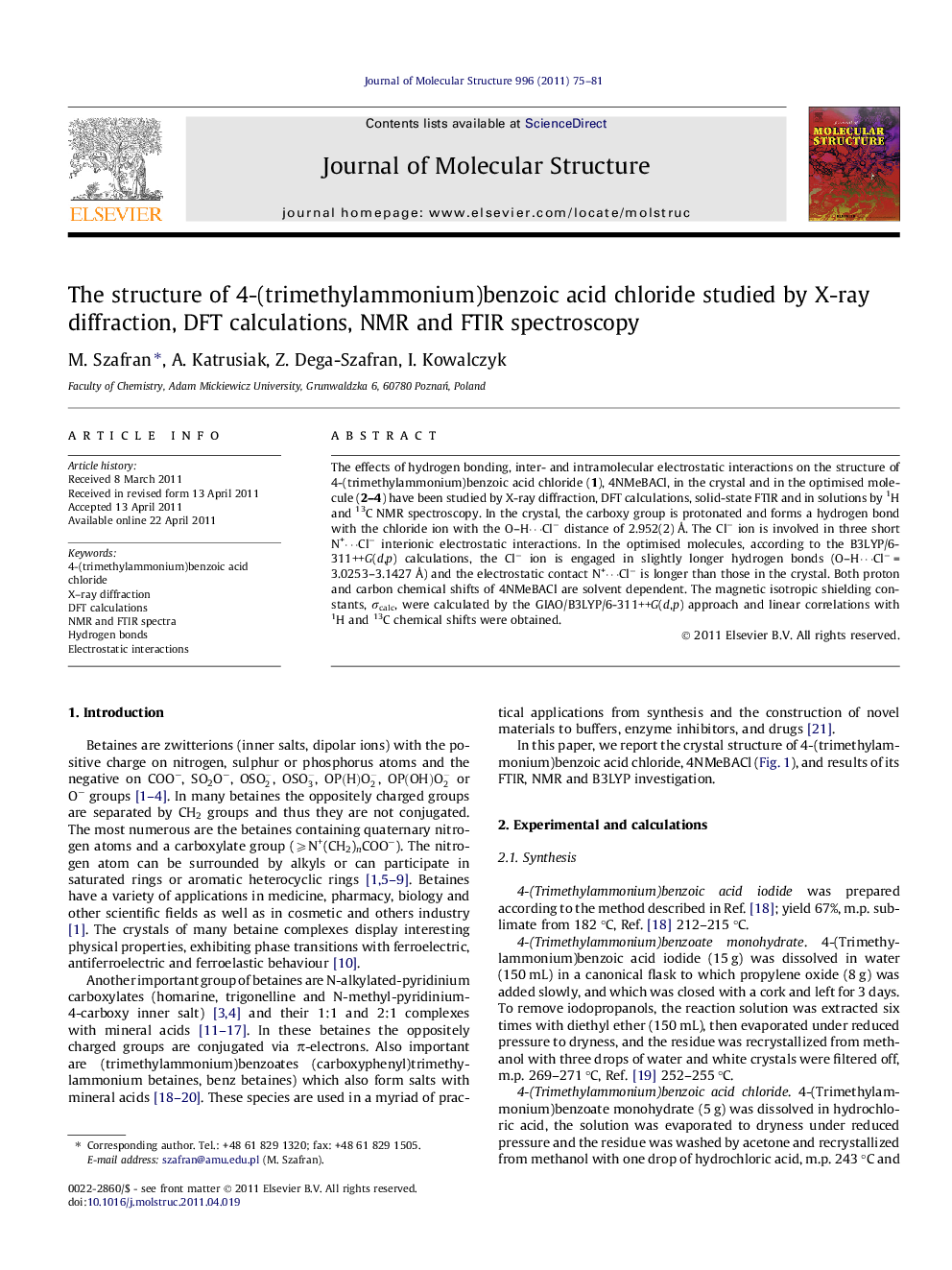| Article ID | Journal | Published Year | Pages | File Type |
|---|---|---|---|---|
| 1406234 | Journal of Molecular Structure | 2011 | 7 Pages |
The effects of hydrogen bonding, inter- and intramolecular electrostatic interactions on the structure of 4-(trimethylammonium)benzoic acid chloride (1), 4NMeBACl, in the crystal and in the optimised molecule (2–4) have been studied by X-ray diffraction, DFT calculations, solid-state FTIR and in solutions by 1H and 13C NMR spectroscopy. In the crystal, the carboxy group is protonated and forms a hydrogen bond with the chloride ion with the O–H⋯Cl− distance of 2.952(2) Å. The Cl− ion is involved in three short N+⋯Cl− interionic electrostatic interactions. In the optimised molecules, according to the B3LYP/6-311++G(d,p) calculations, the Cl− ion is engaged in slightly longer hydrogen bonds (O–H⋯Cl− = 3.0253–3.1427 Å) and the electrostatic contact N+⋯Cl− is longer than those in the crystal. Both proton and carbon chemical shifts of 4NMeBACl are solvent dependent. The magnetic isotropic shielding constants, σcalc, were calculated by the GIAO/B3LYP/6-311++G(d,p) approach and linear correlations with 1H and 13C chemical shifts were obtained.
► In crystal of 4-(trimethylammonium)benzoic acid chloride the O–H⋯Cl− distance is 2.952(2) Å. ► The Cl− ion is involved in three short N+⋯Cl− interionic electrostatic interactions. ► In DFT optimized molecules the hydrogen bonds are slightly longer. ► The experimental proton and carbon-13 chemical shifts correlate with calculated magnetic isotropic shielding constants.
